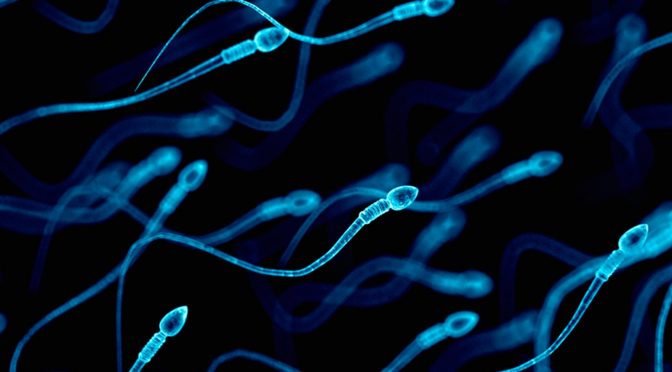The prostate is a walnut-sized gland that forms part of the male reproductive system. It is located in front of the rectum and just below the urinary bladder. It surrounds the urethra, the tube through which urine passes out of the body. The prostate is made of two or three lobes. Its function is to squeeze fluid into the urethra as sperms move through, during sexual climax. This fluid, which helps make up semen, energizes the sperm and makes the vaginal canal less acidic.
Normal prostate weighs 10-15 gm. Prostate enlargement happens to almost all men as they get older. As the prostate enlarges, it presses against the urethra like a clamp. The bladder wall becomes thicker and irritable. The bladder begins to contract even when it contains small amounts of urine, causing more frequent urination. Eventually, the bladder weakens and loses the ability to empty itself, so some of the urine remains in the bladder. The narrowing of the urethra and partial emptying of the bladder cause many of the problems associated with BPH
An enlarged prostate is often called benign prostatic hyperplasia.
What is BPH?
BPH is an enlarged prostate, which as it enlarges, can squeeze down on the urethra. The bladder wall becomes thicker. Eventually, the bladder may weaken and lose the ability to empty completely, leaving some urine in the bladder. BPH is a naturally aging process.
Causes
The cause of BPH is not well understood. No definite information on risk factors exists. A small amount of prostate enlargement is present in many men over age 40 and more than 90% of men over age 80.
Symptoms
The size of the prostate does not always correspond to the obstruction or the symptoms it produces. Some men with greatly enlarged glands have little obstruction and few symptoms while others, with lesser enlargements, have more blockage and severe symptoms.
Symptoms include:
- A weak or slow urine stream
- A feeling of incomplete bladder emptying
- Difficulty starting urination
- Frequent urination
- Urgency to urinate
- Getting up frequently at night to urinate
- A urinary stream that starts and stops
- Straining to urinate
- Continued dribbling of urine
- Pain with urination or bloody urine (these may indicate infection)
- Inability to urinate (urinary retention)
Clinical evaluation and tests / investigations
Several tests help to identify the problem and decide whether surgery is needed.
- Complete medical history – including other medical conditions.
- Digital rectal exam to feel the prostate gland.
- Uroflowmetry – urine flow rate
- Post-void residual urine on sonography to see how much urine is left in the bladder after urination
- Urodynamic study – pressure flow studies to measure the pressure changes in the bladder during urination.
- Urinalysis & urine culture to check for blood or infection
- Prostate-specific antigen (PSA) blood test to screen for prostate cancer
- Trans rectal ultrasound and prostate biopsy – if there is a suspicion of prostate cancer, this test is recommended.
- Cystoscopy – to see the inside of the urethra and the bladder. This test determines the size of the gland and identifies the location and degree of the obstruction.
Complications
Men who have had long-standing BPH with a gradual increase in symptoms may develop:
- Urinary tract infections
- Blood in the urine
- Urinary stones
- Damage to the kidneys
- Urinary retention
Treatment
The choice of a treatment is based on the severity of the symptoms and the presence of other medical conditions.Men with an enlarged prostate, having only minor symptoms need watchful waiting with regular check up – a yearly examination to monitor the progression of symptoms and to determine if any treatment is necessary.
For minor symptoms, lifestyle changes like:
- Avoid alcohol and caffeine, especially after dinner.
- Fluid intake: Not to drink a lot of fluid all at once. Spread out fluids throughout the day. Avoid drinking fluids within 2 hours of bedtime.
- Avoid medication that contains decongestants or antihistamines. These medications can increase BPH symptoms.
Medications
- Alpha 1-blockers (tamsulosin and alfuzosin) are medications which relax the muscles of the bladder neck and prostate. This allows easier urination.
- Finasteride and dutasteride lower levels of hormones produced by the prostate, reduce the size of the prostate gland, increase urine flow rate, and decrease symptoms of BPH. Potential side effects related to the use of finasteride and dutasteride include decreased sex drive and impotence.
Antibiotics may be prescribed to treat associated prostatitis.
Surgery
Surgical intervention is recommended if there is:
- Incontinence
- Recurrent blood in the urine
- Inability to fully empty the bladder (urinary retention)
- Recurrent urinary tract infections
- Kidney failure
- Bladder stones
- Non responsive to medical management
- Severe persistent symptoms obstructing daily activities
- Retention of urine not relieved by medicines
The choice of a specific surgical procedure is based on the severity of symptoms, risk status of the patient and the size and shape of prostate gland. Following are the surgical options procedure s for the treatment of prostate enlargement
Transurethral resection of the prostate (TURP):It is the most common surgical treatment for BPH and is performed by inserting a resectoscope, through the urethra which has an electrical loop that cuts prostatic tissue and seals blood vessels. This surgery requires anesthesia and a hospital stay of 3-4 days.
Bipolar PK TURP – TURIS:Transurethral resection on saline; the procedure is same as above, however it is safer and has minimal post operative symptoms like burning urine and urgency etc. This procedure can be done for those with chronic kidney diseases and some high risk individuals.
Modified PK TURP:This is a modification of the above procedure where in this procedure thought to prevent the retrograde ejaculation in 70% of the patients treated. Here either the bladder neck is incisedor some part of the apex flap is retained so that ejaculatory function is preserved. case selection is important and will be decided by the treatment urologist.
Miniature TURP: Those patients who have small caliber urethra since birth or due to some diseases / illnesses, can be offered miniature TURP , where in small telescopes are used with out damaging the urethral passage while performing prostate surgery.
Open prostatectomy:It is usually performed using general or spinal anesthesia. An incision is made through the abdomen or perineum (the area behind the scrotum). Only the inner part of the prostate gland is removed. The outer portion is left behind. This is a lengthy procedure, and it usually requires a hospital stay of 5 to 10 days.
Laparoscopic prostatectomy:Commonly done for cancerous condition of the patients , this procedure can also be done for grossly enlarged prostate where in 2 small telescopes are put into the bladder and the prostate enucleated and removed via small abdominal wall incision.
Laser surgery for prostate:This surgical procedure employs lasers to vaporise / cut / resect and enucleate the prostate tissue, which is causing the obstruction. The laser fiber is passed through the urethra into the prostate using a cystoscope. The laser energy destroys prostate tissue. Laser surgery requires anaesthesia either local or general (depending on the patient condition) and a minimal hospital stay of 1-2 days. Laser surgery also ensures a quicker recovery time.
However, there are various laser technologies which are tailored to suit each patient and size of the prostate. The treating doctors will be able to determine which LASER is best for aparticular clinical scenario.
KTP laser; PVPPhoto selective vaporisation of the prostate; here the potassium titanyl phosphate laser is used to destroy / vaporise the prostate tissue.
Advantages
- It is blood less
- Can be used under local anesthesia
- Old age
- Those patients who are on antiplatelet (blood thinners): Procedure can be done even without stopping theses medications
- Patients with severe medical conditions, including uncontrolled diabetes and serious lung, kidney or heart disease etc.
Disadvantages
- This type of Laser surgery may not be effective on larger prostates.
HoLEP; holmium laser enucleation of the prostate:Here the high power holmuim laser energy is used to resect / enucleate the prostate in very effective manner. Unlike PVP, size of the prostate gland does not preclude the use of Holmium laser for surgical treatment of BPH. Currently HoLEP is the only procedure to treat larger prostates. The entire lobes are enucleated, moved into the bladder and morcellated or fragmented.
Advantages
- Minimal hospital stay
- Low recurrence rates
- Only treatment of choice for prostate of larger seizes (>80-100 gm ). Even prostate upto 350 gm has been done by MUNH
- Hospitals
- Very effective treatment modality for recurrent prostate problem and enlargement(revision prostatectomy)
- Min blood loss
- High-risk individuals
- Those are on blood thinners with prostates >50 gm with symptoms of prostate enlargement /or obstruction
- This procedure ensures the removal of 80% of the gland
- Lowest recurrence …as per the world wide literature
Disadvantages
- Patient may experience a little incontinence initially, however resolves over a period of time
Sexual function after prostate surgery
Most men find little or no difference in the sensation of orgasm, or sexual climax, before and after surgery. Although most men are able to continue having erections after surgery, a prostate procedure frequently causes a condition called retrograde ejaculation or dry climax. This is because prostate surgery widens the neck of the bladder. Following surgery, the semen takes the path of least resistance and enters the wider opening to the bladder rather than being expelled through the penis. Some young men can undergo apical preserving bipolar TURP – which may prevent this complication in selected patients.
Recurrence
Surgery usually offers relief from BPH for at least 15 years. Only 10% of the men who have surgery for BPH eventually need a second operation for enlargement. Holep reduces the recurrence to <1% in 10 years. Usually these are men who had the first surgery at an early age. BPH and prostate cancer: No apparent relation
Although some of the signs of BPH and prostate cancer are the same, having BPH does not increase the chances of getting prostate cancer. Nevertheless, a man who has BPH may have undetected prostate cancer at the same time or may develop prostate cancer in the future. For this reason, it is recommended that all men over 40 have a rectal examination once a year to screen for prostate cancer.
After BPH surgery, the tissue removed is routinely checked for hidden cancer cells.





0 Comment